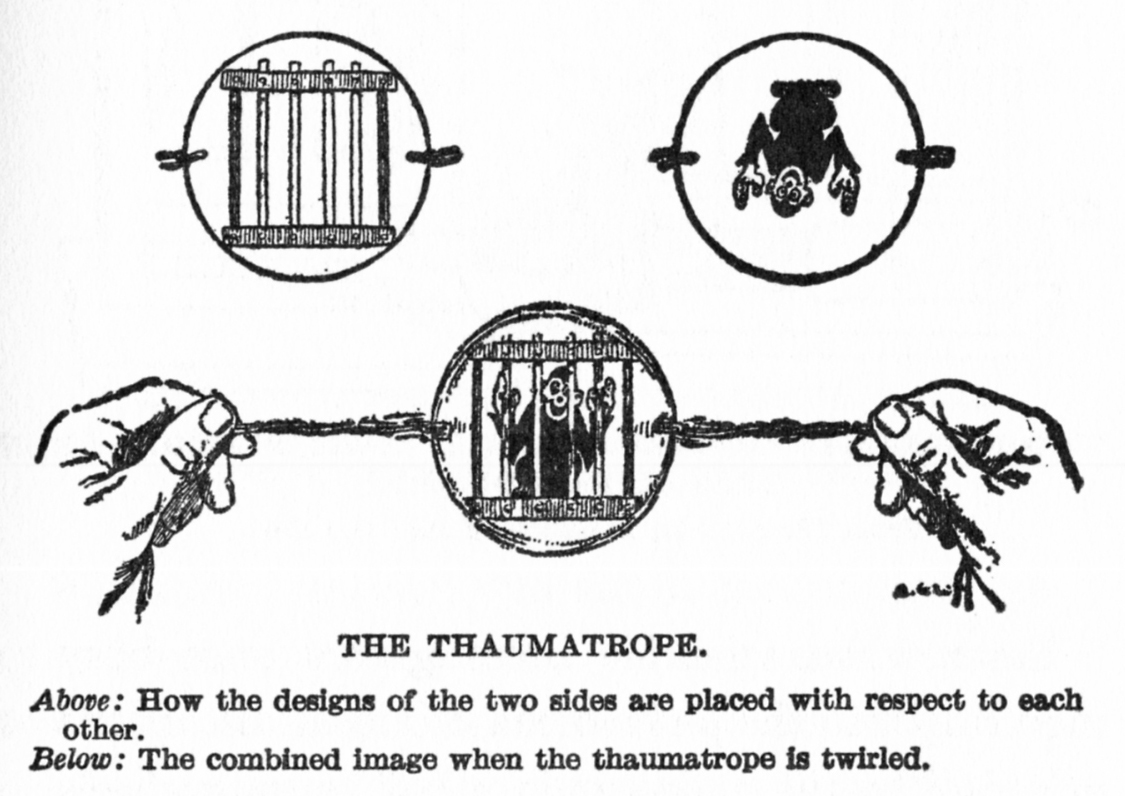As I'd casually mentioned "persistence of vision", I thought I'd drop in a note. After all, if it wasn't for this quirk of our eye/brain mechanism, the zoetrope, cartoon or photographic film would never have been invented. If they had, they would have appeared to us as a stream of stills, a passing curiosity in an avant garde art form maybe.
http://leah-reynolds.com/files/leahreynolds/zoetropes3d_copy.jpg
"The theory of the animated cartoon preceded the invention of the cinema by half a century. Early experimenters, working to create conversation pieces for Victorian parlours or new sensations for the touring magic-lantern shows, which were a popular form of entertainment, discovered the principle of persistence of vision. If drawings of the stages of an action were shown in fast succession, the human eye would perceive them as a continuous movement."
http://www.britannica.com/art/animation#ref715172
https://upload.wikimedia.org/wikipedia/commons/7/7d/Sparkler_Circle.jpg
We've become so accustomed to the illusion of rapidly changing images as a representation of movement that it's easy to forget it entirely. At least as children we could be amazed that we could draw circles in the air with a sparkler.
"Persistence of vision is a commonly-accepted although somewhat controversial theory which states that the human eye always retains images for a fraction of a second (around 0.04 second). This means that everything we see is a subtle blend of what is happening now and what happened a fraction of a second ago.
In film and video, this phenomena is often claimed to account for our ability to perceive a sequence of frames as a continuous moving picture. However this idea was debunked in 1912 and there is no scientific evidence to suggest that persistence of vision works in this way. Rather, it is thought that the illusion of continuous motion is caused by unrelated phenomena such as beta movement (the brain assuming movement between two static images when shown in quick succession).
Despite this, persistence of vision continues to be incorrectly taught in schools as the physiological mechanism behind video's illusion of movement."
http://www.mediacollege.com/glossary/p/persistence-of-vision.html
There may be some dispute over the hows and whys of the effect. For a film maker or animator, isn't it enough to know that the audience will accept 24 or 25 pictures per second as natural movement?
For now.




